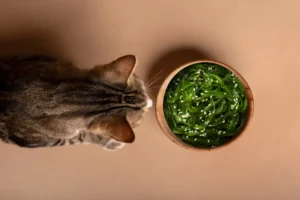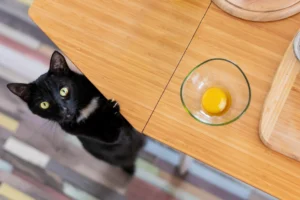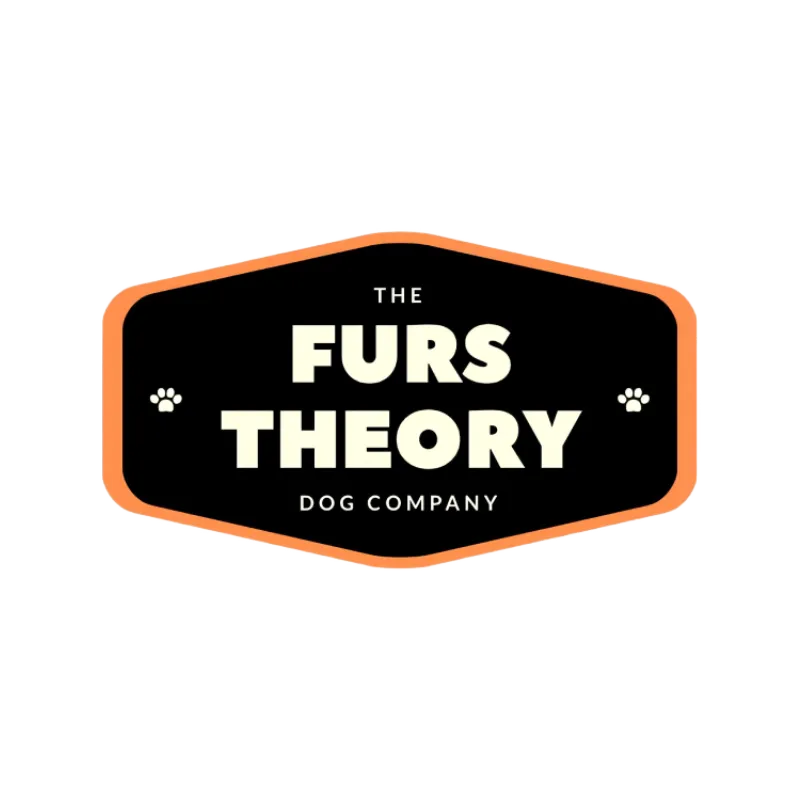When it comes to putting ourselves or our pets on a new diet, it’s only natural to want to know what we’re getting ourselves into. Aside from knowing how much this lifestyle switch up would cost us, it’s also important to know and understand what the diet contains in order to prepare ourselves for it.
Hence, here are some commonly asked questions our team gets about the pet meals and their answers in 4 parts:
- Wet Food, Fresh Food, Raw Food: What’s The Big Diff?
- Can Puppies and Kittens Thrive On A Fresh Food Diet?
- All About Petchef’s Meals
- Serving and Storing Petchef’s Meals
Wet Food, Fresh Food, Raw Food: What’s The Big Diff?
Petchef
Our meals consist of freshly sourced and cooked human-grade meats, vegetables, herbs and oils that are nutritionally-balanced and biologically appropriate for both dogs and cats, with no additives or preservatives!
Pros: Your pet will get more energy, less allergies, shinier coat, healthier weight, less visits to the vet, and a longer life! All this without having to source, prepare, and cook the meals yourself.
Cons: If your pet has specific medical issues that require more than the standard amounts of vitamins and minerals, you may need to supplement according to your vet’s instructions.
BARF
The ‘Bones And Raw Food’ diet is exactly that. It consists primarily of raw, meaty bones (such as chicken necks or beef bones), as well as a small percentage of fruit, vegetables, eggs, yogurt, and organs. It is the closest diet to what their canine and feline ancestors ate in the wild.
Pros: A primary benefit different from Petchef meals is the presence of living enzymes. These are proteins only found in raw foods which help the body function: they help restore, repair, and maintain health and are not present in cooked or processed foods.
Cons: It is extremely messy and commonly requires meals to be fed outside or in an easily cleaned and confined area. Also, living in a tropical climate, it is hard to keep fresh when transporting, making it almost necessary for meals to be store-bought and home-prepared yourself.
Canned Food
A preserved meal consisting of a high protein and low carb content, processed and sealed in a tin container. Not served fresh unlike the other two options, it has a long shelf life and has added vitamins, minerals, additives and preservatives.
Pros: Highly palatable to even the pickiest eaters, and has a really long shelf-life and high water content.
Cons: Can contribute to periodontal disease, and dramatically increases pets’ exposure to Bisphenol A (BPA), an industrial chemical that causes a myriad of disorders from reproductive illnesses to cancer.
Can Puppies and Kittens Thrive On A Fresh Food Diet?
To play it safe, puppies and kittens should only switch to a Petchef meal plan after they are 3 months old, or around the moment they switch from 3 meals a day to 2. This is because they require more protein, fat and other content than adults of the same species during the very initial period of their life.
Puppy and kitten foods should be notably higher in calories, protein, and fat content than adult foods, but lower in fiber and carbohydrate content. Kittens should consume extra taurine, while puppies should consume extra amino acids and calcium.
As with any changes to diet, we strongly suggest consulting with your vet prior to making the switch over to Petchef-made meals.
All About Petchef’s Meals
1. What is the nutritional breakdown of the Petchef recipes?
You can find the nutritional breakdown soon on the website but it’s currently still in the works. For a breakdown of key ingredients in the meantime, please visit the recipe page on our website.
2. Petchef has 8 different recipes for dogs, 7 for cats. How do I know which is the best option for my pet?
First off, the best way to answer that question is to really ask yourself (and your pet):
- The goal you wish to achieve with your pet’s diet
- Any allergies where certain ingredients need to be avoided
- Medical issues that need to be addressed in the diet
- If you have a puppy / kitten, senior pet, or neither
Asking these questions will be the best way to determine the best recipe, or combination of recipes for your pet’s meal plan at Petchef. Having your pet’s sensitivities in mind, is of special importance! If you don’t know, you should try to get an allergy test via your vet. In this case, no news is not necessarily good news, as you may be surprised with an adverse reaction.
If you are looking for overall healthy meals without any specific goal in mind however, below you can find the main protein sources and their benefits:
3. What are the benefits of each one of those main ingredients for my pet?
Our Petchef meals are designed with your dog or cat’s natural diet in mind. Hence it’ll mainly comprise proteins weighted to the right ratios suited for your pet. Here are the 8 types of proteins we use and their benefits:
Chicken: Builds lean muscle mass and delivers essential Omega 6 fatty acids, amino acids and glucosamine for healthy skin, shiny coat and sustainable bone health. (Protein scale: 26g per 100g)
Buffalo: Lean red meat with lower calories and less cholesterol than beef, so it’s a great option for pets looking to reduce the ‘chonk’, and who want to combat kidney and liver issues. Highly digestible and a great hypoallergenic option for pets with chicken and beef sensitivities. (Protein scale: 21g per 100g)
Dory (For dogs only!): White-fleshed fish less prone to having mercury content, also a great low-cholesterol alternative. (Protein scale: 11g)
Beef: A classic choice. Great source of iron, zinc, selenium, niacin (B3) and vitamins B6 and B12. Has the least amount of sodium so great for any pets with kidney issues. (Protein scale: 23g)
Lamb: A great source for B-group vitamins, including riboflavin (B2), niacin (B3), B6 and B12, great for healthy coat and proper nervous function. Your pet can become especially deficient in these vitamins, as they are easily water-soluble. However, this meat has a high fat & cholesterol content, so best to avoid if your pet has kidney or liver issues. (Protein scale: 31g)
Salmon: A fantastic source of Omega-3 fatty acids which are great to boost the immune system, decrease inflammation, and keep your pet’s coat shiny and healthy. (Protein scale: 27g)
Tuna: A very lean protein source, with a high quantity of good minerals for your pet including selenium, phosphorus, potassium, magnesium and the B-group of vitamins B3, B6 and B12, with a low amount of fat. However, given its high mercury content, it is advisable to make it only part of your pet’s meal plan, not its full diet. (Protein scale: 24g)
Pollock: A great source of Vitamin B12, amino acids, phosphorus and selenium. Great for brain function, immune system, promoting calcium and protecting from infection while being a lean protein source low in fat, this is a great fish source to consider for your pet. (Protein scale: 17g)
4. Do Petchef recipes include additional taurine for cats?
Yes! Taurine is exclusively found in animal-based proteins, which makes up to 76-80% of our cat recipes. An average cat needs between 10mg /kg of body weight per day, which all our recipes provide.
NOTE: Dogs and cats both will need more taurine depending on any medical issues they may have. Please be sure to consult with your vet to see if your pet needs more than the average daily dose.
5. Does Petchef include additional calcium in their recipes?
An average cat requires 0.045 grams per kg of their weight to be calcium, and an average dog requires 0.05 grams per kg of their weight, which is well provided in all our recipes. Rest assured, if your pet is eating a well-balanced diet, there’s probably no need to add a calcium supplement to their routine.
To understand whether or not your pet needs more calcium, is better addressed with your vet. Some circumstances that would require a larger amount of calcium intake would be your pet being a:
- Large dog breed
- Puppy
- Cat with kidney failure or have received thyroid surgery
- Nursing mother dogs and cats
Calcium is an essential mineral for dogs and cats, which means that it cannot be made by their body and must be obtained through their diet.
Being an electrolyte, a component which helps your pet’s body conduct energetic impulses in the body, it is crucial for sending and receiving neurotransmitters, the proper contraction of muscles, and even blood coagulation. You can look at it as an analogy for oil in a machine, a lubrication between different parts for proper functioning and protection of individual parts. It also supports teeth and bone health.
Chicken, fish and vegetables are great sources of calcium. If you would like to reinforce your pet’s calcium intake, you can give your dog a bone as a treat, or ask our Petchef Advisors for some eggshell powder to add to your pet’s meal plan.
Serving and Storing Petchef’s Meals
1. Does the meal come with a serving portion and instructions?
Once you provide the age, breed, activity level and medical issues of your pet, our Petchef Advisors can give you an appropriate portion size for your pet’s needs, which will be clearly marked on the portions we send to you as part of your pet’s subscription meal plan.
As usual, double-checking with your vet is always advisable to rule-out any special situations which may require smaller or larger portion sizes given your pet’s individual needs.
As for instructions on feeding, please consult our Feeding Guidelines blog post for appropriate transition to the Petchef diet and maintenance thereafter.
2. How many times should I feed my pet a day?
There are many ways to go about this, but we would suggest following these guidelines:
- For kittens and puppies under 6 months: 3 meals a day
- For kittens and puppies 6 months and above: 1-2 meals a day
- For nursing cat and dog mothers: Leave the food outside for them to graze when they need it.
It is important to note that one meal a day can lead to hyperacidity in the stomach which starts after 8-12 hours of no food, which can cause nausea. So please observe your pet. If you notice your pet vomiting bile before its next meal, be sure to feed more meals per day.
Where experts can all agree that portion size is much more important than the number of meals per day, as this all depends on the age, breed, activity level and medical issues of your pet.
3. Should I be heating up the food to serve my pet?
Absolutely no microwaving or immediate heating! As in all meat products, bacteria is ever-present. If heated suddenly, you can quickly bring meat into the “danger zone” where bacteria multiply the most rapidly, causing smelly, spoiled food.
4. How do I avoid leaving the Petchef portions out too long to thaw and getting crusty / full of ants?
- For smaller portions (up to 200g each), defrost and thaw in fridge 1 day before
- For larger portions (from 250g portion sizes), defrost and thaw in fridge 2 days before
- Submerged sealed smaller portion (up to 200g each) in a bowl of cold or lukewarm water to thaw for 15-20 minutes.
Note: Do keep the package sealed to retain moisture before submerging it to thaw.
5. How long can the Petchef portions last in the freezer?
As a general rule of thumb, any frozen food will keep for three months in a standard home freezer.
6. How long can the opened Petchef portions last in the fridge?
Petchef portions, whether opened or closed, will keep for a maximum of 4 days in the fridge. If opened, we advise using a fresh food sealing clip or tie to avoid drying out, cross-contamination or dripping condensation as a rule of thumb food safety strategy.
7. What are telling signs the meat has gone bad and it’s time to dispose of them?
Maybe you left some portions in the freezer and can’t recall when they were received. Upon looking at your freezer and determining whether the portions are good to thaw and eat, there are a few cues:
- You can see some air exposure and/or freezer burn
- Color has changed from when originally received
- It has an unusual odor once thawed and opened
- It has an unusual texture once thawed and opened
- It has been frozen, thawed, and frozen again
- Your freezer is overcrowded, sitting in a frozen puddle of some unknown liquid, or hasn’t been cleaned in an unusually long time
And again, as a general rule of thumb, do not serve if more than three months in your freezer.
8. How long does Petchef treats & oil last?
For any of our treats and oils, please check the expiry date on the packaging to determine whether to eat or to throw!
-//-
As pet parents ourselves, we truly believe that healthy fresh food for pets should be convenient and affordably priced. Which is why we’ve also written a guide to DIY-ing your own homemade pet food.
But if you’d like to have a fresh sample of human-grade fresh food for your furkid delivered to your door, we’ve got that covered! Simply tell us all about your furkid and their dietary habits and we’ll recommend a suitable meal plan for you to sample.
Sounds simple enough? Hit up our friendly Petchef Advisors for your free sample now.











